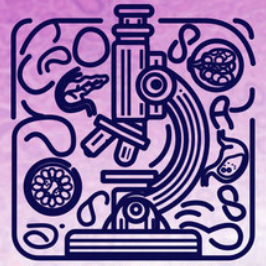(See also the personal webpage of our group members)
(For a full list of publications, see below, and see also the personal webpage of our group members)

The field of digital pathology has made significant strides in tumor diagnosis and segmentation, driven by various challenges. Despite these advancements, the efficacy of current algorithms encounters a significant challenge due to the inherent diversity present in digital pathology images and tissues. The variances arise from diverse organs, tissue preparation methods, and image acquisition processes, resulting in what is termed as domain-shift. The primary goal of COSAS is to develop strategies that enhance the resilience of computer-aided semantic segmentation solutions against domain-shift, ensuring consistent performance across different organs and scanners. This challenge seeks to advance the development of artificial intelligence and machine learning algorithms for routine diagnostic use in laboratories. Notably, COSAS marks the first challenge in computational histopathology, providing a platform for evaluating domain adaptation methods on a comprehensive dataset featuring diverse organs and scanners from various manufacturers. If the dataset from the challenge is helpful to you, please consider citing our pre-experimental paper. We are currently in the process of finalizing the competition paper and will be releasing it shortly. Thank you for your support!
@inproceedings{10222270,
author = {Long, Xi and Liu, Jingxin and Hou, Xianxu},
booktitle = {2023 IEEE International Conference on Image Processing (ICIP)},
title = {Domain Adaptation of Digital Pathology Images using Joint Stain Color and Image Quality Constraints},
year = {2023},
volume = {},
number = {},
pages = {1805-1809},
keywords = {Image quality;Pathology;Image color analysis;Parametric statistics;Reliability;Clinical diagnosis;Task analysis;digital pathology;domain adaptation;stain color;image quality;mitosis detection},
doi = {10.1109/ICIP49359.2023.10222270},
issn = {},
month = oct
}@article{AUBREVILLE2023102699,
title = {Mitosis domain generalization in histopathology images — The MIDOG challenge},
journal = {Medical Image Analysis},
volume = {84},
pages = {102699},
year = {2023},
issn = {1361-8415},
doi = {https://doi.org/10.1016/j.media.2022.102699},
url = {https://www.sciencedirect.com/science/article/pii/S1361841522003279},
author = {Aubreville, Marc and Stathonikos, Nikolas and Bertram, Christof A. and Klopfleisch, Robert and {ter Hoeve}, Natalie and Ciompi, Francesco and Wilm, Frauke and Marzahl, Christian and Donovan, Taryn A. and Maier, Andreas and Breen, Jack and Ravikumar, Nishant and Chung, Youjin and Park, Jinah and Nateghi, Ramin and Pourakpour, Fattaneh and Fick, Rutger H.J. and {Ben Hadj}, Saima and Jahanifar, Mostafa and Shephard, Adam and Dexl, Jakob and Wittenberg, Thomas and Kondo, Satoshi and Lafarge, Maxime W. and Koelzer, Viktor H. and Liang, Jingtang and Wang, Yubo and Long, Xi and Liu, Jingxin and Razavi, Salar and Khademi, April and Yang, Sen and Wang, Xiyue and Erber, Ramona and Klang, Andrea and Lipnik, Karoline and Bolfa, Pompei and Dark, Michael J. and Wasinger, Gabriel and Veta, Mitko and Breininger, Katharina},
keywords = {Domain generalization, Histopathology, Challenge, Deep Learning, Mitosis}
}